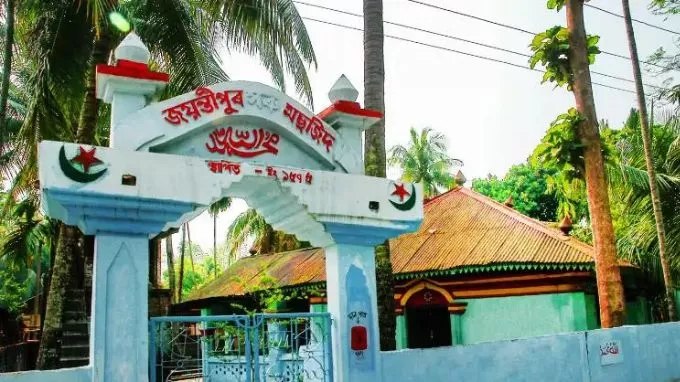
Horu Masjid, also known as Budha Ganyan Masjid, is located in the Kaliabor area of Assam's Nagaon district. Built in 1575 AD, it holds a significant place in the religious and architectural history of Assam. This mosque was constructed during the reign of Ahom King Suklengmung, a period when Assam was witnessing the rise of the neo-Vaishnavite movement. The Ahom rulers, known for their religious tolerance, allowed various communities, including Muslims, to practice their faith freely. This mosque stands as a testament to the peaceful coexistence of different religious communities in the region. The mosque's construction is closely tied to the Moriya community, Muslims who were captured during wars and later settled in Assam. These prisoners of war were allowed to practice Islam, leading to the establishment of small mosques, including Horu Masjid, over time. The architectural style of Horu Masjid is unique in that it incorporates local Assamese elements, blending seamlessly with traditional Islamic features. The mosque's structure closely resembles the local naamghars (prayer halls used in Vaishnavism), particularly in its use of foundation pillars, known as laikhutas. These pillars are similar to those found in naamghars, symbolizing the shared cultural space between Assamese Hindus and Muslims. The mosque was built using traditional materials like powdered brick, sticky rice flour, and black gram flour as binding agents, a technique also seen in the construction of historical Assamese structures such as Ranghar and Kareng Ghar. The bricks used in Horu Masjid were made by the Moriya people, and the materials reflect the architectural practices of the Ahom era. One of the most striking features of Horu Masjid is the presence of miniature brass domes, known as kalchis, on its roof. These kalchis are typically used in Assamese namghar, further emphasizing the blending of Islamic and local architectural styles. The entrance of the mosque is modeled after the main gate of the Kaaba in Mecca, a tribute to Islamic traditions. Inside the mosque, the walls are adorned with colorful glass mosaics arranged in floral patterns, with verses from the Quran emblazoned in similar glasswork. The construction of the mosque was a community effort, with every family in the area contributing resources such as sticky rice flour and black gram. This cooperative spirit highlights the strong communal bonds that existed between different religious communities in Assam. Despite being over 400 years old, Horu Masjid continues to function as a place of worship for the local Muslim community. It also serves as a symbol of the region’s religious harmony, where people of different faiths have long lived in peace and mutual respect. Over the centuries, the mosque has undergone repairs and restorations, especially after minor damage caused by the 1950 earthquake, but it still retains much of its original character